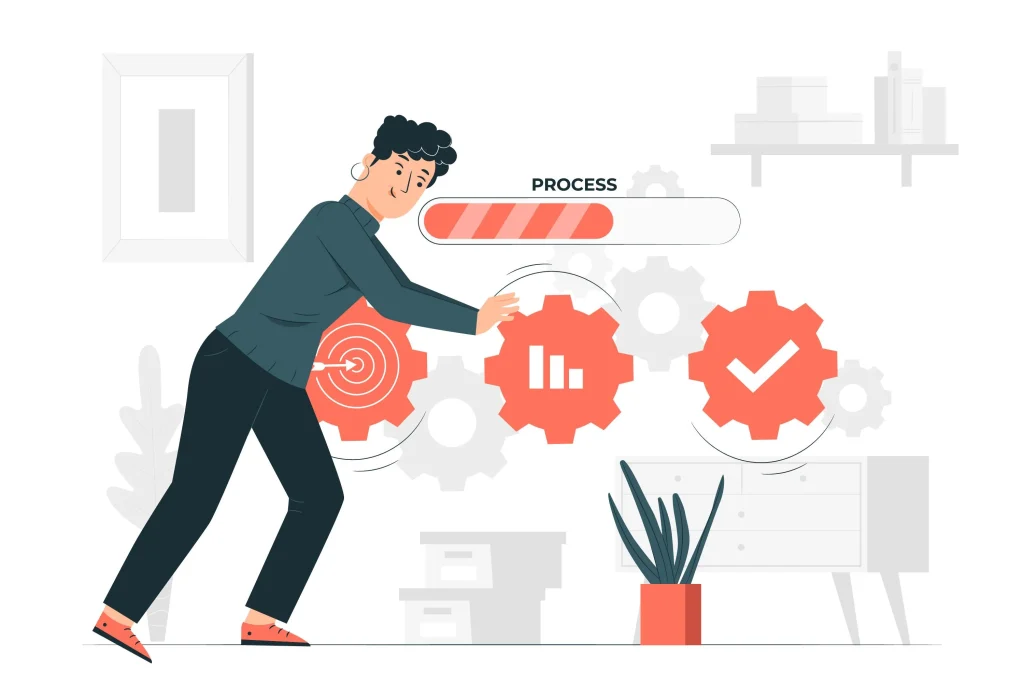
In a world of burgeoning competition and ever-evolving market dynamics, achieving success in recruitment has become a pivotal factor in ensuring organizations’ prosperity. The ability to attract, assess, and secure top talent is a strategic imperative that directly impacts an organization’s capacity to innovate, adapt, and thrive in today’s dynamic business landscape.
Join us on a journey through the intricate landscape of recruitment strategies, where precision, adaptability, and a keen understanding of the human element converge to unlock the full potential of every hiring endeavor.
Define Clear Objectives and Requirements
At the outset of the recruitment process, the foundation for success is laid by meticulously defining the objectives and requirements of the position you’re looking to fill. This step involves a series of detailed actions to ensure a comprehensive understanding of the role and its alignment with the broader organizational goals.
- Collaborate with Stakeholders:
- Initiate discussions with key stakeholders, including hiring managers, department heads, and team leaders. Gain insights into the purpose of the role, its strategic importance, and the specific contributions expected from the new hire. This collaboration ensures that the objectives are in harmony with the overall organizational strategy.
- Conduct a Job Analysis:
- Undertake a thorough job analysis to dissect the intricacies of the position. Identify the core responsibilities, day-to-day tasks, and long-term goals associated with the role. This analysis provides a clear picture of the skills, qualifications, and attributes necessary for success.
- Skills and Competencies:
- Clearly outline the technical and soft skills required for the role. Technical skills may include specific software proficiency, industry certifications, or specialized knowledge. Soft skills encompass communication, leadership, adaptability, and teamwork. Balancing both sets of skills is essential for a well-rounded candidate.
- Qualifications and Education:
- Define the minimum educational qualifications and professional certifications necessary for the role. Consider whether a degree is mandatory or if equivalent experience holds equal weight. This ensures that the candidate pool consists of individuals with the requisite educational background.
- Experience Level:
- Determine the appropriate level of experience for the role, taking into account the complexity of tasks and responsibilities. Specify the minimum and preferred years of experience, keeping in mind that too broad a range may attract candidates who might be over or underqualified.
- Cultural Fit and Values Alignment:
- Consider the cultural fit of the candidate within the organization. Clearly articulate the company’s values, mission, and work culture. Assess how well the candidate aligns with these cultural aspects to promote a harmonious and productive work environment.
- Future Growth and Development:
- Anticipate the future needs of the organization and how the role may evolve. Outline opportunities for growth and development within the position, emphasizing a commitment to employee advancement. This can attract candidates who are not just a fit for the current role but are also aligned with long-term organizational objectives.
- Regulatory and Compliance Requirements:
- Depending on the industry, specify any regulatory or compliance requirements that the candidate must meet. This could include licensing, adherence to industry standards, or knowledge of specific regulations. Ensuring compliance from the outset mitigates potential challenges down the line.
- Document and Circulate:
- Compile all the gathered information into a comprehensive document. This document serves as the blueprint for the recruitment process and is a valuable resource for everyone involved. Circulate this document among the hiring team and stakeholders to ensure alignment and understanding.
By investing time and effort in defining objectives and requirements, you set the stage for a focused and effective recruitment strategy. This clarity expedites the subsequent stages of the hiring process and ensures that every candidate considered aligns closely with the organization’s needs and aspirations.
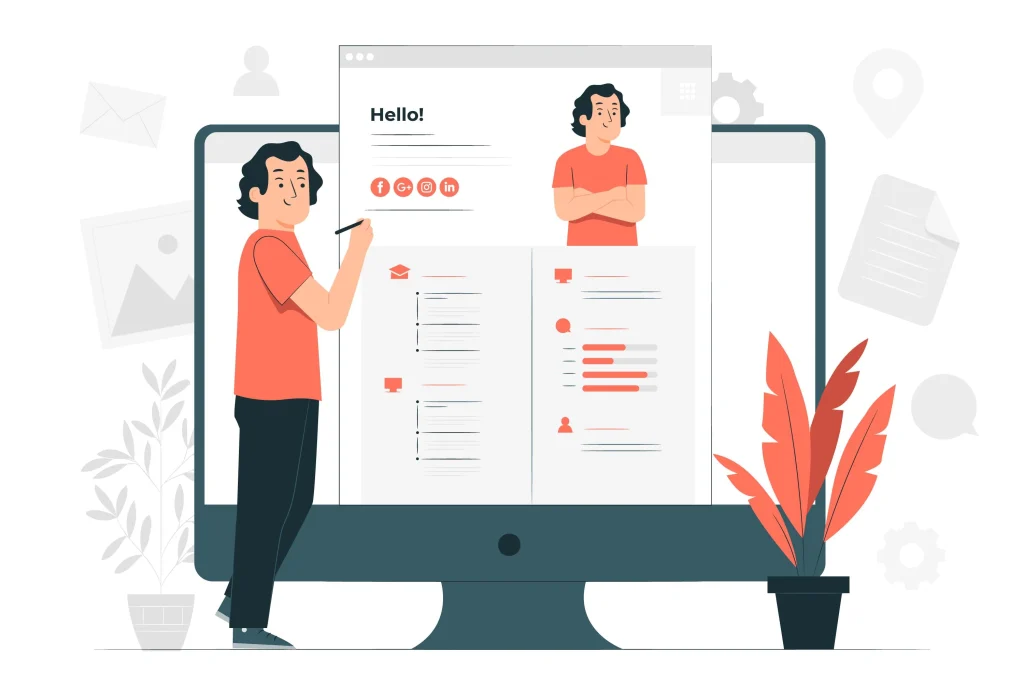
Craft Compelling Job Descriptions
Crafting a compelling job description is an art that involves more than listing duties and qualifications. It’s about creating an enticing narrative that attracts top talent and conveys your organization’s unique aspects. Let’s break down the process into actionable steps with detailed examples:
- Job Title and Summary:
- Begin with a clear and attractive job title. Instead of a generic “Software Engineer,” consider “Senior Backend Developer – Innovate our Next-Gen Products.” Follow this with a concise summary that provides an overview of the role’s significance and impact within the organization.
- Responsibilities and Key Duties:
- Enumerate the primary responsibilities and key duties associated with the role. For a Content Marketing Specialist, this might include creating engaging content across multiple platforms, conducting keyword research, and collaborating with the design team to ensure visual appeal.
- Qualifications and Requirements:
- Clearly outline the qualifications and requirements for the role. For a Customer Support Representative, this could include a bachelor’s degree in business or a related field, excellent communication skills, and experience using customer relationship management (CRM) software.
- Company Culture and Values:
- Integrate a section that provides insight into your company’s culture and values. Use language that reflects your organization’s personality. For a company valuing innovation and collaboration, the description might emphasize a “dynamic and collaborative work environment that fosters creativity.”
- Opportunities for Growth:
- Highlight opportunities for professional growth and development within the role. A Systems Analyst job description could mention exposure to cutting-edge technologies, ongoing training programs, and the chance to lead high-impact projects.
- Employee Testimonials:
- Consider including quotes or testimonials from current employees, offering authentic perspectives on the work culture. An example for a Sales Representative role might be: “I value the supportive team culture and the continuous learning opportunities that have significantly boosted my sales skills.”
- Inclusive Language:
- Use inclusive language to attract a diverse pool of candidates. Instead of “seeking a rockstar programmer,” opt for “looking for a skilled and collaborative programmer who values diversity and inclusion.”
- Application Instructions:
- Clearly outline the application process and any specific instructions. For a Graphic Design position, you might request a portfolio showcasing a range of design projects along with the resume and cover letter.
- Benefits and Perks:
- Briefly mention the benefits and perks your organization offers. For instance, a Tech Company might highlight competitive salary packages, flexible work hours, and wellness programs.
- Call-to-Action:
- End with a compelling call-to-action, encouraging potential candidates to apply. A Software Development Manager job description could conclude with “Join our team and play a pivotal role in shaping the future of software development!”
By incorporating these elements, your job description becomes more than a list of requirements – it becomes a powerful tool to attract, inform, and engage potential candidates, setting the stage for a successful recruitment process.
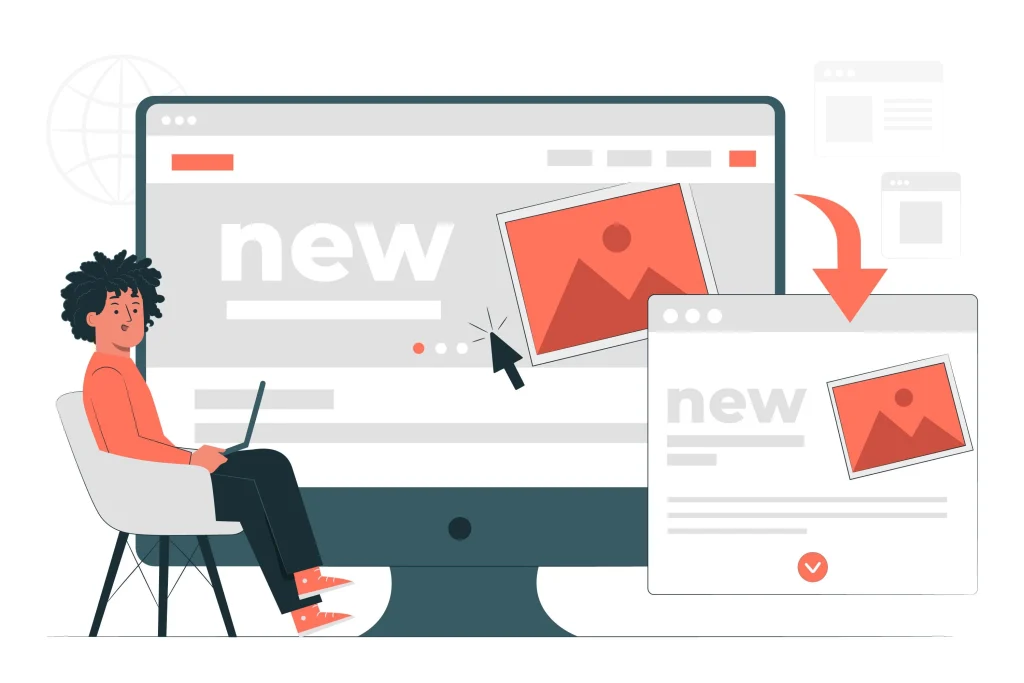
Diversify Sourcing Channels
Ensuring a diverse pool of qualified candidates requires a strategic approach to sourcing. Rather than relying on a single channel, casting a wide net across various platforms and networks is key. Let’s delve into a detailed breakdown of how to diversify your sourcing channels effectively:
- Job Boards:
- Utilize popular job boards such as LinkedIn, Indeed, Glassdoor, and industry-specific platforms—post detailed job listings with engaging descriptions. Consider paid promotions to increase visibility and reach a broader audience.
- Company Website:
- Feature your job openings prominently on your company’s careers page. Ensure that the application process is user-friendly and provides comprehensive information about the organization’s values, culture, and benefits. This serves as a direct channel for potential candidates who are already interested in your company.
- Social Media Platforms:
- Leverage the power of social media to amplify your job postings. Share openings on LinkedIn, Twitter, Facebook, and Instagram. Create visually appealing posts that encapsulate the essence of the role and encourage employees to share within their networks.
- Professional Networks:
- Engage with professional networks related to your industry. Attend conferences, webinars, and industry-specific events to connect with potential candidates. Establish a presence on platforms like GitHub for tech roles or Behance for creative positions.
- Employee Referrals:
- Encourage and incentivize employee referrals. Employees often have extensive networks, and recommendations from within the company can lead to high-quality candidates. Implement a structured referral program and recognize employees who refer successful hires.
- Recruitment Agencies:
- Collaborate with reputable recruitment agencies that specialize in your industry. Agencies often have access to a pool of pre-screened candidates and can streamline the initial stages of the recruitment process.
- University and College Partnerships:
- Foster relationships with educational institutions. Participate in career fairs, offer internships, and engage with student organizations. Building connections with universities can help you tap into emerging talent.
- Industry Associations and Forums:
- Join relevant industry associations and forums where professionals in your field congregate. Contribute to discussions, share your company’s values, and subtly promote job opportunities. This establishes your organization as an active participant in the industry.
- Networking Events:
- Attend networking events, both virtual and in-person. This includes industry conferences, meetups, and local business events. Networking provides direct interaction with potential candidates and allows them to learn more about your company culture.
- Diversity and Inclusion Initiatives:
- Actively participate in diversity and inclusion initiatives. Collaborate with organizations that focus on diverse talent. This includes partnerships with women in tech groups, LGBTQ+ organizations, and other diversity-focused networks.
- Data Analytics and Recruitment Tools:
- Leverage data analytics and recruitment tools to assess the effectiveness of your sourcing channels. Monitor metrics such as application conversion rates, time-to-hire, and candidate demographics to refine your strategy continually.
By incorporating these diverse sourcing channels into your recruitment strategy, you not only reach a broader audience but also enhance the likelihood of attracting candidates with various backgrounds and experiences, fostering a more inclusive and dynamic workplace.
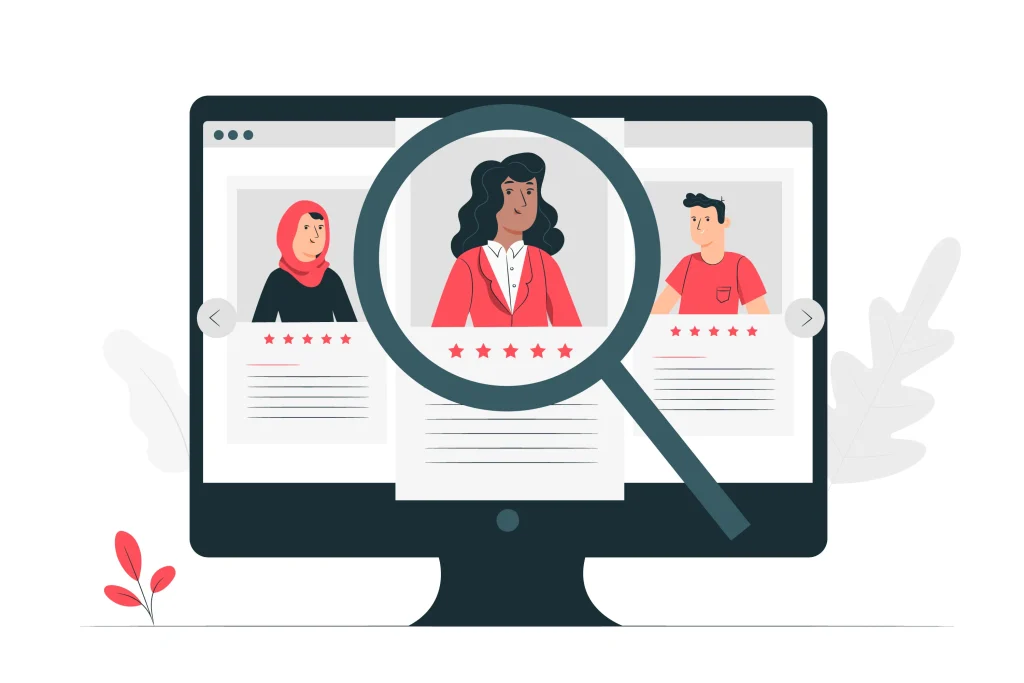
Implement a Structured Screening Process
Implementing a structured screening process is pivotal for identifying the most qualified candidates efficiently and fairly. This process involves meticulously planned steps to evaluate candidates’ qualifications, skills, and cultural fit. Let’s break down the components of a structured screening process in detail:
- Resume Review:
- Begin by thoroughly reviewing each candidate’s resume. Look for alignment with the job requirements, educational background, and relevant experience. Identify key achievements, skills, and any gaps that may need clarification during subsequent stages.
- Phone Screening:
- Conduct an initial phone screening to assess candidates’ communication skills, enthusiasm for the role, and a basic understanding of their qualifications. Use this opportunity to discuss key aspects of the job, gauge their interest, and address any initial questions.
- Skills Assessments:
- Administer skills assessments tailored to the specific requirements of the role. This could include technical tests, writing samples, or problem-solving exercises. For example, a software developer might be asked to complete a coding challenge, while a content writer could be tasked with creating a sample blog post.
- Behavioral Interviews:
- Incorporate behavioral interviews to assess how candidates have handled situations in the past. Use the STAR (Situation, Task, Action, Result) method to elicit detailed responses. For instance, inquire about a challenging project they’ve worked on and how they navigated obstacles to achieve success.
- Technical Interviews:
- If applicable, conduct technical interviews to evaluate candidates’ proficiency in specific skills relevant to the role. This could involve coding exercises, problem-solving scenarios, or practical demonstrations of their technical knowledge. For a network engineer, this might include troubleshooting a simulated network issue.
- Cultural Fit Assessment:
- Assess cultural fit through targeted questions that align with the organization’s values and work environment. For instance, if collaboration is a key value, inquire about a candidate’s experience working in cross-functional teams and their approach to resolving conflicts.
- Reference Checks:
- Conduct thorough reference checks to verify the accuracy of the information provided by candidates. Contact previous employers or colleagues to gain insights into their work ethic, collaboration skills, and overall performance. This step provides valuable third-party perspectives.
- Panel Interviews:
- Organize panel interviews with key stakeholders and team members. This allows multiple perspectives to be considered and provides candidates with a broader understanding of the team dynamics. Ensure that each panelist focuses on specific aspects, such as technical skills, interpersonal skills, or cultural fit.
- Candidate Experience:
- Prioritize a positive candidate experience throughout the screening process. Clearly communicate expectations, provide timely feedback, and ensure that candidates feel valued. A positive experience, even for those who may not be selected, enhances your employer brand.
- Continuous Improvement:
- Regularly review and refine the screening process based on feedback from hiring teams and candidates. Analyze key performance indicators, such as the success rate of hires from each stage, to identify areas for improvement. Embrace a culture of continuous improvement to enhance the effectiveness of your screening process over time.
By implementing this structured screening process, you ensure a comprehensive evaluation of candidates and create a fair and transparent system that contributes to the overall success of your recruitment efforts.

Prioritize Cultural Fit
Ensuring a strong cultural fit is essential for long-term employee satisfaction and the overall success of a team. This involves assessing whether a candidate’s values, work style, and interpersonal skills align with the organization’s culture. Let’s explore a detailed approach to prioritizing cultural fit during the recruitment process:
- Define Organizational Values:
- Start by clearly defining your organization’s values. These could include integrity, innovation, collaboration, or any other principles that form the foundation of your workplace culture. Articulate these values in a way that resonates with your team and potential candidates.
- Incorporate Cultural Fit Questions:
- Integrate specific cultural fit questions into the interview process. For example:
- “Can you provide an example of when you collaborated with a diverse team to solve a problem?”
- “How do you approach challenges, and how does that align with our company’s value of continuous improvement?”
- Integrate specific cultural fit questions into the interview process. For example:
- Behavioral Interviewing for Cultural Fit:
- Use behavioral interviewing techniques to assess past behavior as an indicator of future cultural alignment. Ask candidates to share experiences that demonstrate their alignment with key cultural aspects. For instance:
- “Describe a situation where you had to adapt to a significant change in the workplace. How did you handle it, and what was the result?”
- Use behavioral interviewing techniques to assess past behavior as an indicator of future cultural alignment. Ask candidates to share experiences that demonstrate their alignment with key cultural aspects. For instance:
- Team Compatibility Assessment:
- Assess how well a candidate would fit within the existing team dynamics. Consider organizing a team-based interview or informal interaction to gauge interpersonal dynamics. For example:
- “How do you typically contribute to a team environment, and how do you handle disagreements or conflicts with colleagues?”
- Assess how well a candidate would fit within the existing team dynamics. Consider organizing a team-based interview or informal interaction to gauge interpersonal dynamics. For example:
- Company Values Presentation:
- Provide candidates with a clear understanding of your company’s values during the recruitment process. Share relevant materials, such as the employee handbook or mission statement. This transparency helps candidates self-assess their alignment with the organization.
- Employee Involvement:
- Involve current employees in the assessment of cultural fit. Arrange for candidates to meet team members or participate in team-building activities. This allows employees to provide input on cultural compatibility and fosters a sense of inclusivity.
- Observations During the Interview:
- Pay attention to non-verbal cues and behaviors exhibited by candidates during the interview. Assess their level of enthusiasm, engagement, and alignment with the company’s values. This can provide valuable insights beyond verbal responses.
- Evaluate Adaptability:
- Assess a candidate’s adaptability to different work environments and organizational cultures. This is particularly important in dynamic workplaces where changes occur frequently. Ask questions like:
- “How do you adapt to new team dynamics or changes in company processes?”
- Assess a candidate’s adaptability to different work environments and organizational cultures. This is particularly important in dynamic workplaces where changes occur frequently. Ask questions like:
- Alignment with Leadership Styles:
- Consider how a candidate’s leadership style aligns with the organization’s leadership philosophy. If your company values a collaborative leadership approach, inquire about a candidate’s experience in collaborative decision-making and leadership.
- Employee Resource Groups:
- If applicable, highlight any employee resource groups or affinity groups within your organization. These groups can provide a supportive environment for individuals with shared characteristics or interests, contributing to a more inclusive culture.
- Post-Hire Follow-Up:
- After hiring, conduct regular check-ins with new employees to ensure ongoing alignment with the organizational culture. Encourage open communication and address any concerns or challenges related to cultural fit promptly.
Prioritizing cultural fit goes beyond surface-level assessments; it involves a holistic understanding of a candidate’s values and behaviors in different contexts. By incorporating these detailed steps into your recruitment process, you increase the likelihood of building a cohesive and harmonious team that aligns with your organization’s unique culture.
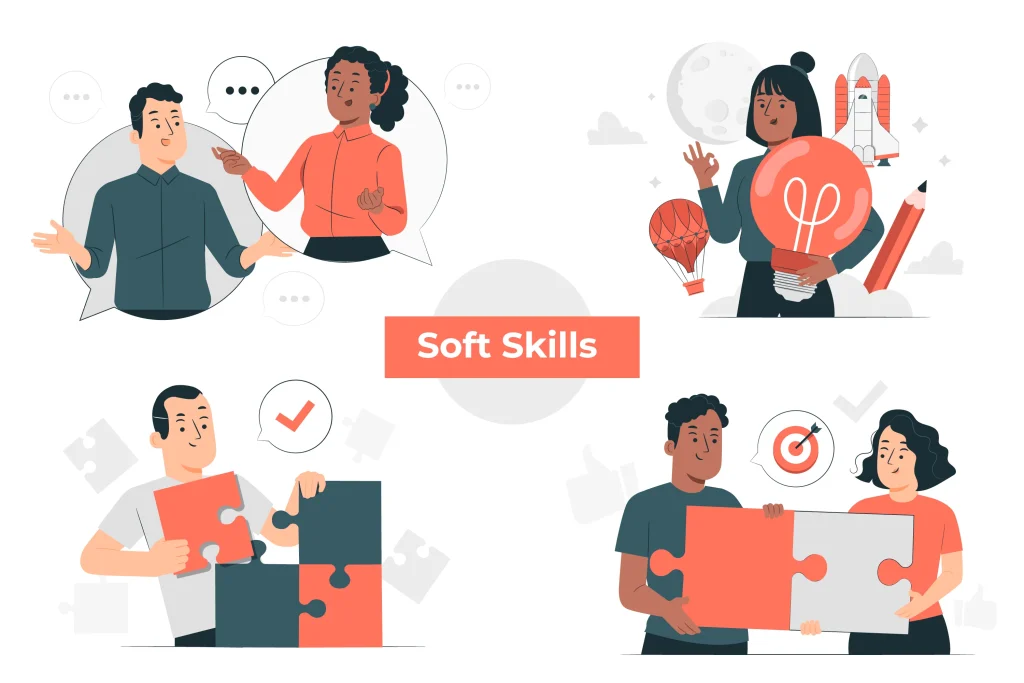
Emphasize Soft Skills
While technical proficiency is crucial, the significance of soft skills in a candidate cannot be overstated. These interpersonal attributes contribute to effective communication, collaboration, and overall success in the workplace. Let’s delve into a detailed approach to emphasizing soft skills during the recruitment process:
- Identify Key Soft Skills:
- Start by identifying the specific soft skills crucial for success in the role. Common soft skills include communication, teamwork, adaptability, problem-solving, creativity, and emotional intelligence. Tailor this list based on the unique requirements of the position.
- Incorporate Soft Skills into Job Descriptions:
- Clearly articulate the importance of soft skills in your job descriptions. For example:
- “Seeking a Marketing Coordinator with strong communication skills to collaborate with cross-functional teams and external partners.”
- “We value creativity and problem-solving abilities in our Software Development team. Apply if you have a track record of innovative solutions.”
- Clearly articulate the importance of soft skills in your job descriptions. For example:
- Behavioral Interview Questions:
- Craft behavioral interview questions that elicit responses demonstrating specific soft skills. For instance:
- “Can you provide an example of a project where effective communication was critical to its success?”
- “Describe a situation where you had to adapt quickly to a changing work environment. How did you handle it?”
- Craft behavioral interview questions that elicit responses demonstrating specific soft skills. For instance:
- Scenario-Based Assessments:
- Implement scenario-based assessments to gauge how candidates would approach real-world situations. This could involve presenting a hypothetical problem and asking candidates to outline their problem-solving process or collaborate on a group project.
- Simulated Work Tasks:
- Design simulated work tasks that mirror the challenges candidates might face in the role. This provides a practical demonstration of their soft skills in action. For a customer service position, this could involve handling a mock customer complaint scenario.
- Team Interviews:
- Conduct interviews with potential team members to assess how candidates would integrate into existing teams. This provides insights into their collaborative and interpersonal skills. For example:
- “How do you approach building relationships with team members? Can you share an experience of resolving a conflict within a team?”
- Conduct interviews with potential team members to assess how candidates would integrate into existing teams. This provides insights into their collaborative and interpersonal skills. For example:
- Cultural Fit Assessment:
- As part of assessing cultural fit, evaluate a candidate’s alignment with the organization’s soft skill expectations. If teamwork and collaboration are central to your culture, inquire about a candidate’s experience working in cross-functional teams and their approach to team dynamics.
- Reference Checks for Soft Skills:
- During reference checks, specifically inquire about a candidate’s soft skills. Ask previous employers or colleagues about their communication style, ability to work in a team, and adaptability in various work scenarios.
- Feedback from Collaborative Exercises:
- If candidates participate in collaborative exercises or team projects during the interview process, seek feedback from those who interacted with them. This provides multiple perspectives on their soft skills and collaboration abilities.
- Self-Assessment and Reflection:
- Encourage candidates to self-assess their soft skills and reflect on past experiences that demonstrate these attributes. This self-awareness can lead to more authentic and insightful responses during the interview process.
- Training and Development Opportunities:
- Communicate the organization’s commitment to ongoing training and development of soft skills. Emphasize that employees have opportunities to enhance their interpersonal skills through workshops, coaching, or mentorship programs.
- Post-Hire Soft Skill Development Plans:
- Develop post-hire plans for enhancing soft skills. This could involve onboarding programs that focus on communication, conflict resolution, or leadership development, tailored to the individual needs of the employee.
Emphasizing soft skills in the recruitment process contributes to building a well-rounded and resilient team. By integrating these detailed strategies, organizations can identify candidates who not only possess the necessary technical expertise but also exhibit the interpersonal qualities crucial for success in a collaborative work environment.

Offer Competitive Compensation
Competitive compensation is a cornerstone of successful recruitment, influencing a candidate’s decision to join, stay, and contribute to an organization. Crafting a comprehensive compensation strategy involves considerations beyond salary, encompassing benefits, bonuses, and a transparent approach. Let’s break down the elements of offering competitive compensation in detail:
- Market Research and Benchmarking:
- Begin by conducting thorough market research to understand the prevailing salary trends and compensation packages within your industry and geographical location. Utilize salary benchmarking tools, industry reports, and salary surveys to gather relevant data.
- Salary Transparency:
- Foster a culture of transparency by clearly communicating the salary range for the position. This transparency builds trust with candidates and showcases a commitment to fair compensation practices.
- Base Salary:
- Determine a competitive base salary that aligns with industry standards and reflects the candidate’s experience, skills, and qualifications. Consider factors such as cost of living adjustments and the specific demands of the role within your organization.
- Variable Compensation:
- Explore variable compensation components, such as performance bonuses, commissions, or profit-sharing. Clearly define the criteria for earning variable compensation and how it aligns with individual and organizational goals.
- Benefits Package:
- Develop a comprehensive benefits package that goes beyond salary. Include health insurance, retirement plans, paid time off, and any additional perks or allowances. Evaluate the needs and preferences of your target talent pool to tailor the benefits package effectively.
- Negotiation Flexibility:
- Acknowledge that candidates may have varying expectations and circumstances. Demonstrate flexibility in negotiations, especially for top talent. Consider additional perks or adjustments to the compensation package based on individual needs.
- Performance-Based Raises:
- Implement a structured performance review process with opportunities for salary increases based on merit and accomplishments. Clearly outline the criteria for performance-based raises and communicate the organization’s commitment to recognizing and rewarding excellence.
- Equity and Stock Options:
- In industries where equity or stock options are common, consider incorporating these into your compensation strategy. This can align the interests of employees with the company’s long-term success.
- Salary Reviews and Adjustments:
- Regularly review and adjust salary structures based on market dynamics, internal equity, and the evolving needs of the organization. This proactive approach demonstrates responsiveness to industry trends and employee expectations.
- Salary Transparency:
- Be transparent about the factors influencing the compensation package. Clearly communicate how base salaries are determined, the performance metrics for bonuses, and the overall value of the benefits package. Transparency instills trust and helps manage candidate expectations.
- Total Rewards Statements:
- Provide candidates with total rewards statements that outline the complete value of their compensation package, including base salary, bonuses, benefits, and any other perks. This holistic view helps candidates appreciate the full spectrum of what your organization offers.
- Cost-of-Living Adjustments:
- If your organization has multiple locations, consider cost-of-living adjustments for roles in high-cost areas. This ensures that compensation reflects the economic realities of different geographical locations.
- Employee Assistance Programs (EAPs):
- Offer Employee Assistance Programs to support employees in various aspects of their lives, including mental health, financial well-being, and work-life balance. These programs enhance the overall value of the compensation package.
By implementing these strategies, organizations can create a compensation package that not only meets industry standards but also reflects a commitment to fairness, transparency, and the overall well-being of employees. This approach contributes to attracting and retaining top talent in a competitive job market.

Streamline the Hiring Process
Streamlining the hiring process is essential for attracting top talent, minimizing delays, and ensuring a positive candidate experience. This involves optimizing each stage of recruitment, from initial contact to the final offer. Let’s explore a detailed approach to streamline the hiring process:
- Define Clear Timelines:
- Set realistic and transparent timelines for each stage of the hiring process. Clearly communicate these timelines to both candidates and internal stakeholders. This ensures accountability and helps manage expectations.
- Internal Alignment:
- Foster strong communication and collaboration among internal stakeholders involved in the hiring process. Ensure that everyone is aligned on the role requirements, evaluation criteria, and the overall hiring strategy. Regularly update the team on progress and adjustments to timelines.
- Efficient Application Process:
- Simplify the application process to reduce friction for candidates. Optimize the online application form, and ensure that it is mobile-friendly. Minimize the number of required fields and focus on capturing essential information.
- Automated Application Tracking System (ATS):
- Implement an efficient ATS to automate administrative tasks, such as resume parsing, application tracking, and communication. This technology helps organize candidate data, reduces manual workload, and enhances the overall efficiency of the recruitment process.
- Initial Resume Screening:
- Develop clear criteria for the initial resume screening process. Leverage technology or standardized scoring systems to quickly identify candidates who meet the basic qualifications. This allows recruiters to focus their time on evaluating the most promising candidates.
- Structured Interview Process:
- Standardize the interview process with structured interview guides, predefined questions, and evaluation criteria. This ensures consistency in candidate assessments and helps eliminate bias. Provide training to interviewers on the importance of a structured approach.
- Simultaneous Interviews:
- Whenever possible, conduct simultaneous interviews for different stages of the hiring process. For example, schedule initial phone screenings and on-site interviews on the same day. This minimizes delays caused by scheduling challenges.
- Prompt Feedback:
- Establish a culture of providing prompt feedback to candidates. After each interview stage, share constructive feedback with candidates to keep them informed about their status in the process. Timely communication demonstrates respect for candidates’ time and interest.
- Technology Integration:
- Integrate technology solutions such as video interviews, skills assessments, and AI-driven tools to streamline the evaluation process. These technologies can enhance objectivity, speed up decision-making, and provide valuable insights into candidate suitability.
- Collaborative Decision-Making:
- Facilitate collaborative decision-making by involving key stakeholders in the final stages of the hiring process. Schedule debrief sessions after interviews to discuss candidates’ strengths, weaknesses, and overall fit. This collaborative approach leads to more informed hiring decisions.
- Pre-Employment Testing:
- Implement pre-employment testing as a means of assessing specific skills or competencies relevant to the role. Design these tests to be time-efficient while providing valuable insights into a candidate’s capabilities.
- Reference Checks and Background Verification:
- Streamline the reference check and background verification process. Clearly communicate the required information to candidates in advance, use automated tools when possible, and coordinate with external agencies to expedite the verification process.
- Transparent Communication:
- Maintain transparent communication with candidates throughout the process. Clearly articulate the next steps, timelines, and any potential delays. Address candidate questions and concerns promptly to ensure a positive candidate experience.
- Continuous Process Improvement:
- Regularly analyze key performance metrics, such as time-to-fill, offer acceptance rates, and candidate satisfaction scores. Use this data to identify bottlenecks and areas for improvement. Implement changes to enhance the efficiency and effectiveness of the hiring process continually.
- Post-Offer Onboarding Preparation:
- Begin onboarding preparations as soon as the offer is accepted. Share relevant information with the candidate, provide access to onboarding materials, and facilitate a smooth transition from the recruitment process to the onboarding phase.
By incorporating these strategies, organizations can transform their hiring processes into well-organized, efficient, and candidate-friendly experiences. Streamlining the process not only attracts top talent but also contributes to a positive employer brand and overall organizational success.

Provide Constructive Feedback
Constructive feedback is crucial to the recruitment process, contributing to candidate development, maintaining a positive employer brand, and fostering transparency. Here’s a detailed guide on how to provide constructive feedback throughout various stages of the hiring process:
- Post-Application Acknowledgment:
- As a standard practice, acknowledge receipt of applications promptly. Even at this early stage, you can convey appreciation for their interest and set expectations regarding the timeline for the review process.
- Initial Resume Screening:
- If a candidate is not selected to proceed after the initial resume screening, consider providing a brief and respectful message. Express gratitude for their application, highlight specific qualifications that stood out, and communicate that the current match may not align with the role’s requirements.
- Post-Interview Feedback:
- After each interview stage, offer feedback to candidates, whether positive or constructive. This could include insights into their communication style, technical proficiency, or interpersonal skills. Be specific, highlighting both strengths and areas for improvement.
- Rejection Notifications:
- When informing candidates that they are not moving forward in the process, provide personalized and constructive feedback. Focus on specific aspects that influenced the decision, avoiding generic statements. This feedback helps candidates understand the decision and learn from the experience.
- Timing Matters:
- Ensure that feedback is provided in a timely manner. Delays can lead to frustration and may impact a candidate’s perception of the organization. Aim to provide feedback as soon as possible after the relevant stage of the process.
- Use Positive Language:
- Frame feedback in a positive and encouraging manner. Instead of emphasizing shortcomings, focus on areas for growth and improvement. For example, phrase feedback as, “You demonstrated excellent problem-solving skills; consider further showcasing your experience in project management.”
- Encourage Continuous Improvement:
- Emphasize that the feedback is intended to support the candidate’s professional development. Encourage them to leverage this information for continuous improvement in their skills and approach to future opportunities.
- Constructive Criticism:
- When offering constructive criticism, be specific and actionable. Rather than saying, “Your communication skills need improvement,” provide examples such as, “Consider providing more context when answering technical questions to ensure a comprehensive understanding.”
- Highlight Cultural Fit:
- If cultural fit is a factor in the decision, provide insights into how the candidate could enhance alignment with the organization’s values or work environment. This demonstrates transparency and helps candidates assess their compatibility with the company culture.
- Offer Resources for Improvement:
- Provide resources or suggestions for candidates to enhance specific skills or address identified areas for improvement. This could include recommending relevant courses, workshops, or industry events. Demonstrating a commitment to their growth reinforces a positive employer brand.
- Post-Interview Debrief Sessions:
- After concluding the interview process, consider offering debrief sessions with candidates who express interest in receiving detailed feedback. This provides an opportunity for a more in-depth discussion and ensures that the candidate feels heard and valued.
- Maintain Professionalism:
- Regardless of the feedback content, maintain a professional and respectful tone. Ensure that the feedback is constructive and aligns with the organization’s values. Professionalism in feedback contributes to a positive employer brand and candidate experience.
- Collect Candidate Feedback:
- Actively seek feedback from candidates regarding their experience with the recruitment process. Use their input to identify areas for improvement in your own processes, ensuring a continuous feedback loop that benefits both the organization and future candidates.
By incorporating these practices into your recruitment process, you not only contribute to the professional growth of candidates but also enhance your organization’s reputation as an employer that values transparency, communication, and continuous improvement. Providing constructive feedback is a vital aspect of creating a positive and respectful candidate experience.

Foster Continuous Improvement
Continuous improvement is the cornerstone of an effective and adaptive recruitment process. It involves regularly assessing, refining, and optimizing various aspects of the hiring journey to enhance efficiency, candidate experience, and overall recruitment success. Let’s explore a detailed approach to fostering continuous improvement in recruitment:
- Establish Key Performance Indicators (KPIs):
- Define measurable KPIs that align with the goals of your recruitment process. Common KPIs include time-to-fill, cost-per-hire, quality of hire, and candidate satisfaction scores. Establish benchmarks and regularly monitor these metrics to identify areas for improvement.
- Feedback Loops:
- Implement feedback mechanisms at each stage of the recruitment process. Collect input from candidates, hiring managers, and internal stakeholders to gain diverse perspectives. Analyze feedback to identify strengths, weaknesses, and opportunities for enhancement.
- Post-Implementation Reviews:
- Conduct post-implementation reviews after introducing changes to the recruitment process. Evaluate the impact of these changes on KPIs and gather feedback from the recruitment team. This iterative approach allows for continuous refinement based on real-world outcomes.
- Technology Assessment:
- Regularly assess the efficiency and effectiveness of the technology tools used in recruitment. Ensure that your Applicant Tracking System (ATS), interview scheduling software, and other tools align with the evolving needs of the organization. Explore new technologies that can streamline processes and enhance decision-making.
- Training and Development:
- Provide ongoing training for recruiters, hiring managers, and interviewers. Keep the team informed about best practices, industry trends, and any updates to the recruitment process. This empowers the team to adapt to changing circumstances and maintain a high level of performance.
- Benchmarking Against Industry Standards:
- Benchmark your recruitment processes against industry standards and best practices. Stay informed about emerging trends, innovative approaches, and advancements in recruitment technology. This external perspective can provide valuable insights for refining your own processes.
- Regular Process Audits:
- Conduct regular audits of your recruitment processes. Evaluate each stage for efficiency, effectiveness, and alignment with organizational goals. Identify bottlenecks, areas of redundancy, or potential sources of bias. Implement corrective measures to address any identified issues.
- Diversity and Inclusion Assessments:
- Integrate assessments of diversity and inclusion into the recruitment process. Regularly review the diversity metrics of your candidate pool, interviewees, and hires. Identify strategies to enhance diversity and foster an inclusive hiring environment.
- Candidate Journey Mapping:
- Map out the candidate journey from initial contact to onboarding. Assess each touchpoint for candidate experience, communication effectiveness, and opportunities for improvement. Use this mapping to identify areas where adjustments can enhance the overall candidate journey.
- Collaborative Debrief Sessions:
- Facilitate collaborative debrief sessions with the recruitment team after key hiring decisions. Encourage open discussions about the effectiveness of the evaluation process, alignment with hiring criteria, and any challenges encountered. Use insights from these sessions to refine evaluation methods.
- Stay Adaptable to Market Trends:
- Stay abreast of changes in the job market, including shifts in candidate expectations, industry-specific talent trends, and advancements in recruitment strategies. Adapt your processes to align with market dynamics and emerging best practices.
- Technology-Enabled Analytics:
- Leverage analytics tools to derive actionable insights from recruitment data. Utilize analytics to identify patterns, track the success of sourcing channels, and assess the impact of process changes. Data-driven decision-making enhances the precision of continuous improvement efforts.
- Engage in Continuous Learning:
- Foster a culture of continuous learning within the recruitment team. Encourage team members to share insights, attend industry conferences, and participate in webinars. This collective learning approach ensures that the team remains informed about evolving recruitment practices.
- Employee Surveys:
- Solicit feedback from internal stakeholders, including hiring managers and employees involved in the recruitment process. Their perspectives can provide valuable insights into the effectiveness of the process, potential pain points, and areas for improvement.
- Celebrate Successes and Learn from Failures:
- Acknowledge and celebrate successful hires and positive outcomes. Equally important, learn from any recruitment challenges or failures. Conduct post-mortem analyses to understand the root causes and implement preventive measures for the future.
By integrating these strategies into your recruitment practices, you create a dynamic and adaptive framework that fosters continuous improvement. Regular assessments, feedback loops, and a commitment to staying informed contribute to the agility and success of your recruitment processes over time.
Conclusion
As we conclude our exploration into the strategies that unlock success in recruitment, it is evident that hiring excellence is not merely a goal but an ongoing journey. In a rapidly evolving professional landscape, organizations must embrace the dynamic nature of talent acquisition and continuously refine their approaches to stay ahead.
The strategies discussed—from defining clear objectives and emphasizing soft skills to providing constructive feedback and fostering continuous improvement—are not isolated actions but interconnected threads woven into the fabric of a holistic recruitment strategy. Success lies not just in implementing these strategies but in orchestrating them synergistically, creating a harmonious and effective recruitment symphony.
In the realm of hiring excellence, adaptability is the linchpin. Organizations that recognize the fluidity of talent markets, the evolving expectations of candidates, and the need for continuous refinement will find themselves not only attracting top-tier talent but also cultivating an agile and resilient workforce.
As we navigate the ever-shifting landscape of recruitment, let these strategies serve as beacons, guiding organizations toward a future where hiring is not just a process but a transformative journey that unlocks the full potential of individuals and propels organizations toward sustained success.
This article was created by the FirstHR team. You can find even more helpful HR tips in the Guides section. In the Template section we have prepared for you the most popular HR documents that you can download for free. Enjoy!





